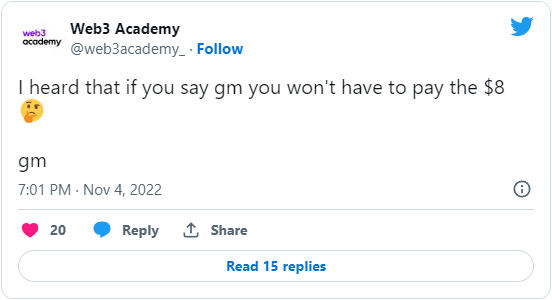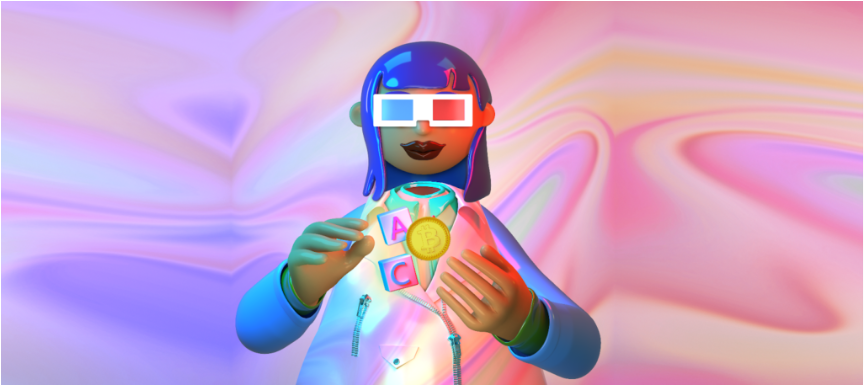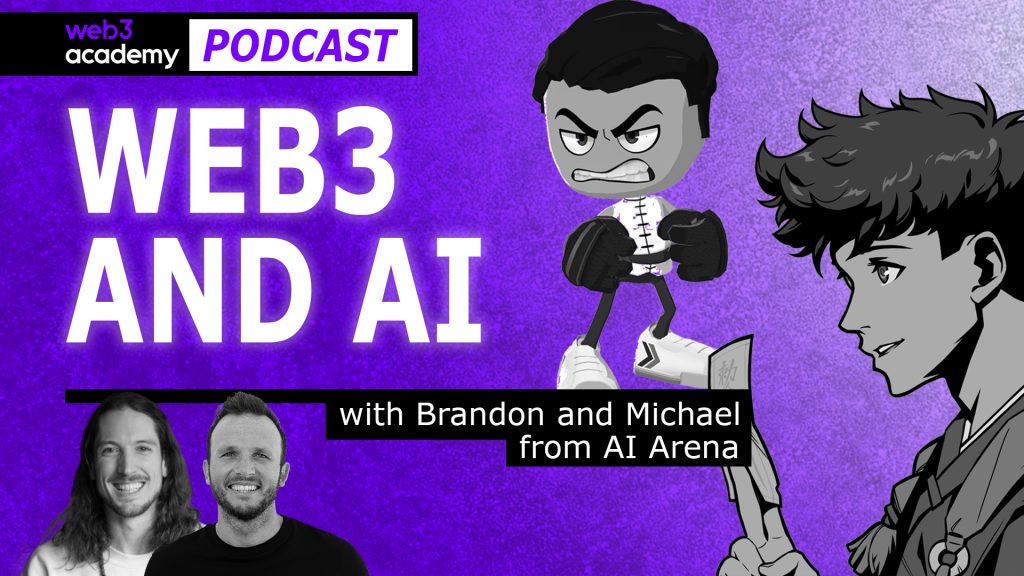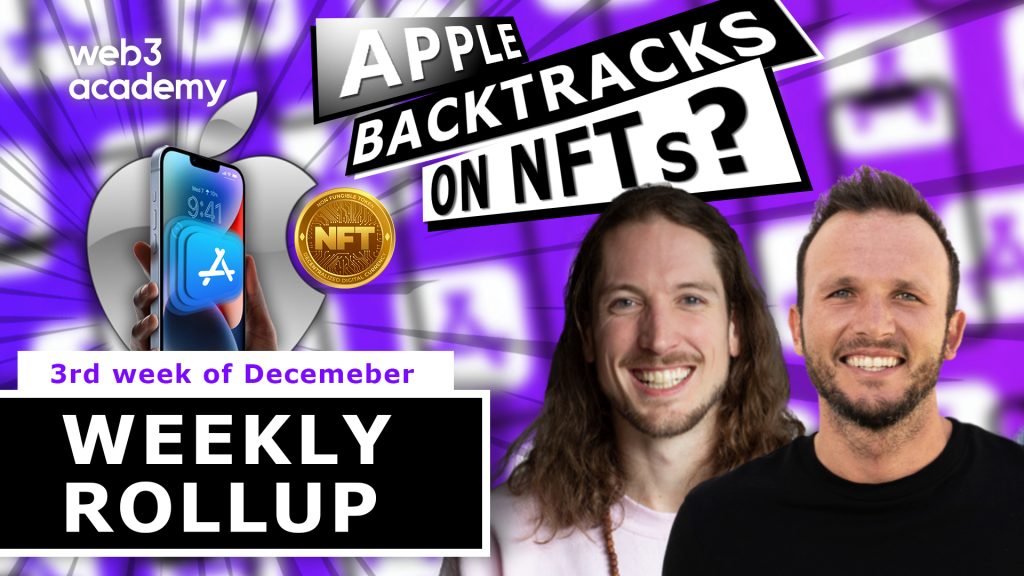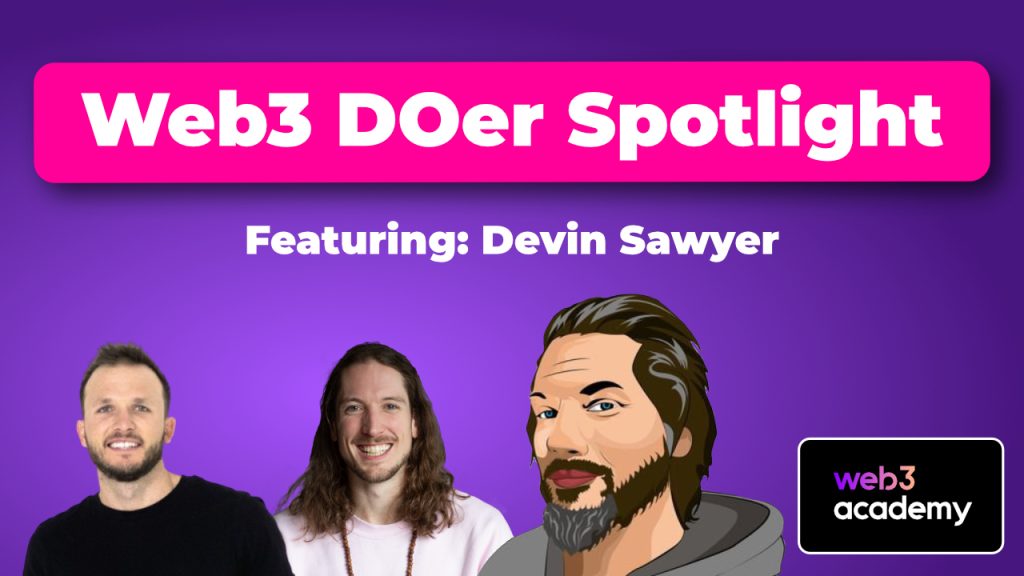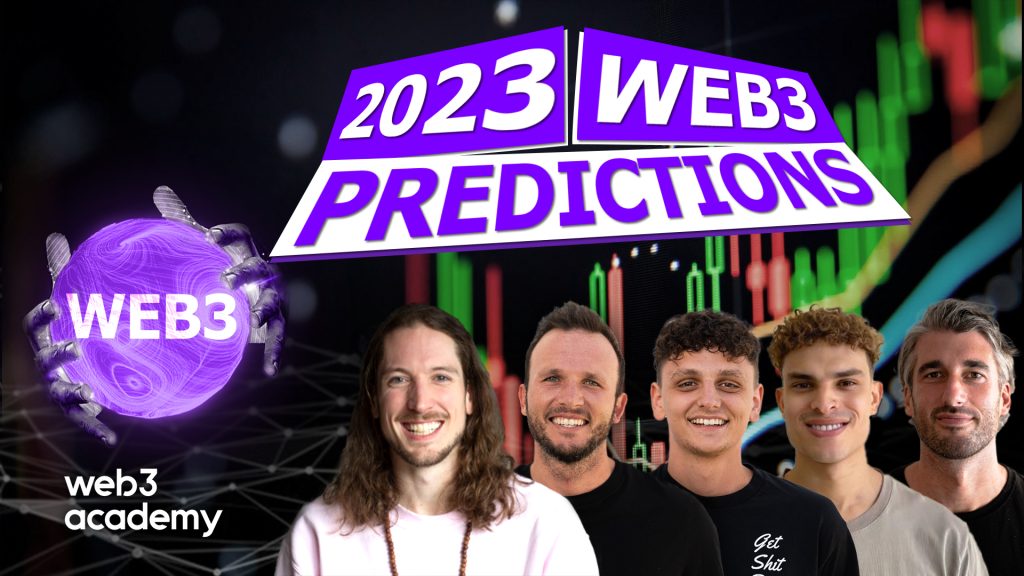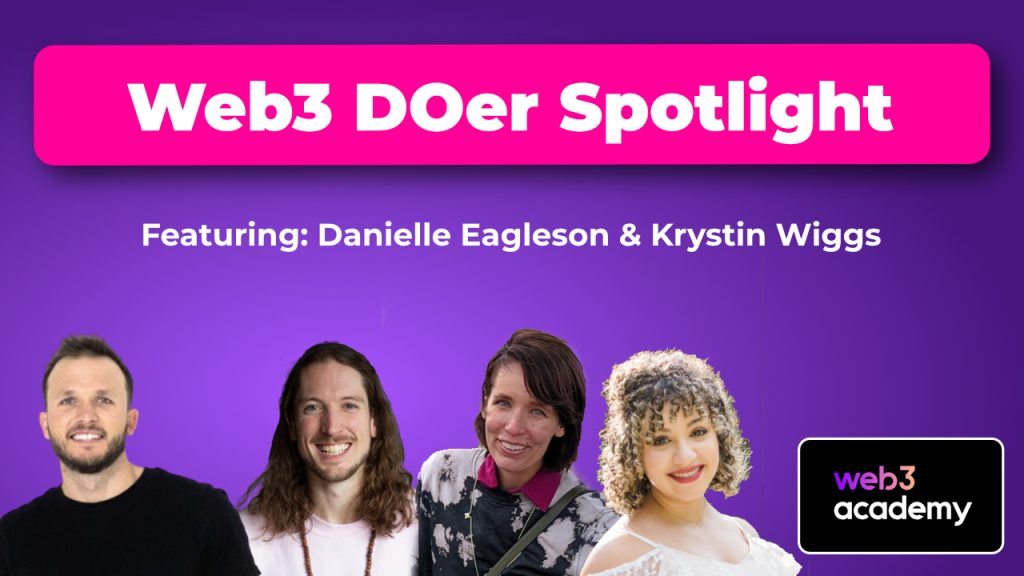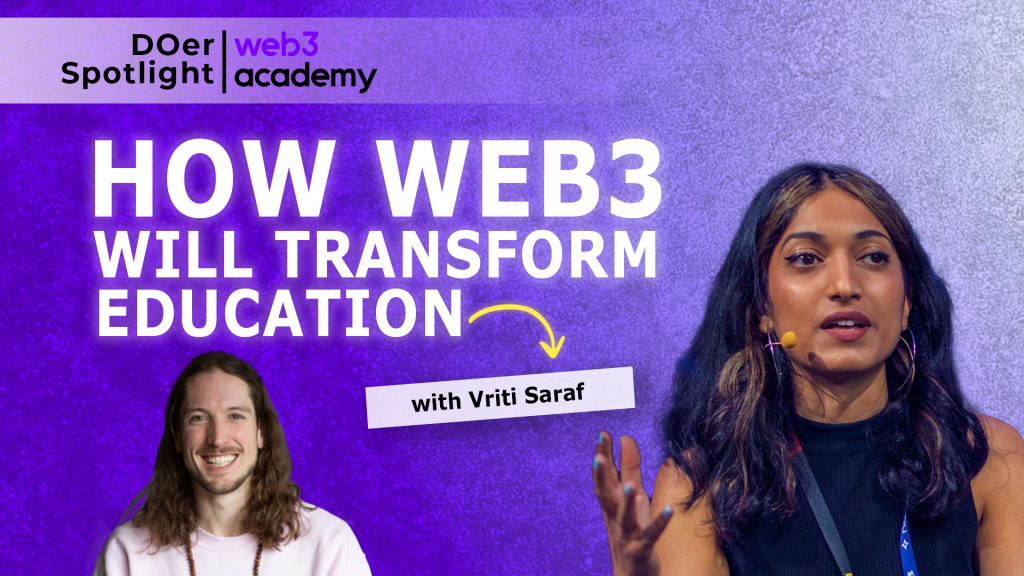
3 Ways Web3 Will Transform Education | Vriti Saraf From Ed3 DAO
Our Current Schooling Models Are Seriously Outdated, Discover How Web3 Will Change That
Tune into the podcast for the low down on how web3 will revolutionize education 👇
GM web3 DOers!
Guess when mainstream school systems were designed?
The 19th century 👴
Sure, we’ve had some changes thanks to technology and new teaching methods. We’ve also tried to create new types of schools, such as Charter and Micro schools, with varying success.
But the problem hasn’t been a lack of desire to improve the school system. It’s mostly been down to not having the right technology to implement changes at scale. 🧑💻
That changes now.
In this week’s DOer Spotlight, we chatted with Vriti Saraf from Ed3 DAO to learn about how web3 will impact education.
We cover:
- Problems with the current education system ❌
- Ways web3 will change how we learn and interact with educational institutions 🧠
- How Ed3 DAO is leading the charge for better education 🏃♀️
- A special announcement from Vriti and Ed3 DAO 🗣️
Let’s talk education 📑
Tired of web2 social? Then make sure to check out Lens Protocol 👀
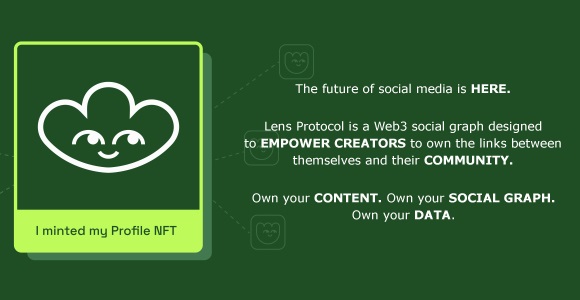
What Are the Current Issues With Education?
The current education system in the US (and many other countries) is outdated.
They follow the industrial schooling approach which is heavily standardized. While this framework makes it easier to educate children (and adults) and track progress, it isn’t optimal for learning. 😵💫
Consequently, we have education systems that prioritize testing and earning a credential, rather than quality learning.
In most schools, children can’t decide what they want to learn about.
Teachers are given a curriculum to teach and students have to deal with it. They don’t have the freedom to pursue what interests them most at the time which can stifle curiosity and their interest in learning.
Another big issue is administration.

For example, when Jay wanted to get his university transcripts it was an absolute nightmare. He had to go to the registrar’s office in person to sign papers and provide identity documents. Then he had to wait a month and pay a hefty admin fee for a document that’s rightfully his!
That’s not even the worst either.
In some developing countries, people have to wait six months or more to receive their documents. And even then, they’re not guaranteed to arrive unless you bribe the officials!
Imagine trying to get a job or move country when you don’t know when or if you’ll receive important documents 😵

POP QUIZ
How Many On-chain Diplomas Did MSBSD Issue in India Recently?
A. 1,000
B. 100,000
C. 1,000,000
Find the correct answer at the bottom of this article. 👀
Web3 Use Cases in Education
Web3 affects education at both the principle and practical levels.
At the principle level, web3 embodies ethos and practices, such as decentralization, self-organization, immersive learning, and self-sovereignty. While these ideas have been around for decades, there hasn’t been a strong movement toward them until now.
And it’s because blockchain technology actually allows us to employ these principles in our lives.
It’s almost as if blockchain is the result of these principles that have been developed over the past few decades. 🤔
Regardless, web3 and blockchain will improve in three ways by enabling:
- Unbundled learning and on-chain credentials
- Immersive metaverse experiences
- Innovative education models at scale
Here’s what that means 👇
1. Unbundled Learning and On-chain Credentials
Unbundled learning isn’t a new concept.
In fact, it’s been around since the first MOOCs (Massive Open Online Courses) launched.
Many educators believe that the low completion rate of these courses means that unbundled learning itself isn’t a successful model. However, the low completion rate is likely because we hadn’t yet fostered a culture of learning online.
On top of this, most online courses don’t count toward university credit or a professional certification. So students will naturally prioritize credentials over learning.
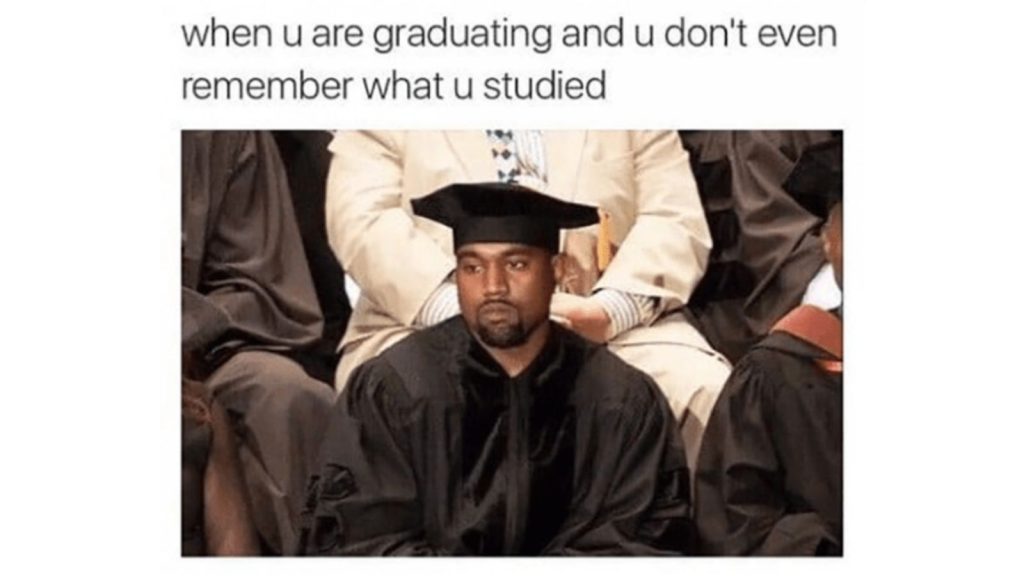
However, unbundled learning is the way to personalize student learning.
Every student learns differently and develops interests at different times. So the goal of unbundled learning is to create a motivational and inspiring learning environment based on individual needs.
For example, in grade schools, unbundled learning incorporates the fundamentals (think literacy, numeracy, etc.) while also allowing children to pursue topics that they naturally gravitate towards.
Unbundled learning also considers the pace of learning and how people enjoy learning. For example, some students may prefer reading while others prefer video lessons.
At first glance, unbundled learning and on-chain credentials seem like they have nothing to do with each other.
But on-chain credentials enable you to truly own your education. It allows you to build your own degree or diploma through online or in-person courses without having to go through arduous admin processes.
You could take an edX course from Harvard or MIT and couple it with courses from your local college or even Coursera’s approved certificates.
Instead of being stuck with one school, you can create a learning path from courses around the world on your own schedule! 🙌
And when you’ve completed them, you wouldn’t have to chase each school for your credit confirmation, you’d have it sent straight to your web3 wallet.
No pesky documents or waiting times included.
In our globally connected world, we should be able to take our identities and credentials wherever we go without the need for physical documents.
Implementing on-chain credentials is how we do this.
And it’s happening right now in Maharashtra—India’s second-largest state with a population size of half the US.
The Maharashtra State Board of Skill Development (MSBSD) issued roughly 100,000 verifiable digital diplomas through LegitDoc and Polygon. Not only are on-chain credentials more secure, private, transparent, and cheaper than other methods, but they’re also much more efficient.
MSBSD’s previous hardcopy-certificate process involved more than 1,000 staff across different institutes and departments which took around 30 days to process.
So not only do students truly own their credentials and receive them much faster but institutions also save countless hours spent on administration ⏳
2. Metaverse Learning Environments
The metaverse isn’t just for gaming fam! We can use this technology to create immersive learning environments and simulate things students would never be able to see or experience IRL.

Would you rather read a book about volcanos? Or see a simulation of Mount Vesuvius erupting in 1944? 🌋
I’m guessing it’s the latter, and the best part is, the metaverse experience will stick in your mind much longer than text from a book.
Metaverse learning also enables social learning for students in remote areas. Instead of interacting through chat or Zoom calls, students can interact with each other in a virtual environment that better imitates real life.
On top of this, metaverses enable greater agency over individual learning.
For example, one of Vriti’s associates created a map of the human body in a metaverse. Students could begin in one area of the body and choose their own adventure.
If a student was interested in how the brain works, they could simply go there to quench their curiosity rather than getting bored while being forced to tour the stomach.
We finally get to live out our dreams of being on the Magic School Bus!
It’s not all sunshine and rainbows, though. ⛔
While metaverses are a powerful learning tool, they can also lead to overstimulation which is counterproductive. It’s also why Vriti always recommends that we shouldn’t spend all our time in metaverses.
Instead, she uses Stanford’s DICE framework to determine when a metaverse experience would be appropriate:
- Dangerous: Essentially any situation where a student could get hurt—interacting with wild animals or watching a volcano erupt up close
- Impossible: Think of going to the moon, the bottom of the ocean, or traveling back in time
- Counterproductive: These simulations could show things like the repercussions of bees becoming extinct or global warming becoming worse
- Expensive: This can cover any field trip that’s too expensive for students, such as traveling overseas or even across the country.
By following this framework, educators can ensure students get the most out of their metaverse experiences.

REPLY TO THIS EMAIL
Would You Consider Learning in a Metaverse?
👉 Let us know by replying yes or no to this email. Bonus points if you tell us why!
3. Enabling Innovative Schooling Models
Educators have always been thinking about how they can improve schooling systems—one such innovation being micro-schools.
In fact, micro-schools are gaining popularity even without the help of web3. Vriti shared that, in the last year and a half, 6 million students moved to micro schools from more standardized options worldwide.
But what’s so great about micro schools? 🤔
Micro schools prioritize unbundled learning. They’re very small institutions (around 5 to 20 students) that allow significant personalization around engagement, structure, and pedagogy from teachers, parents, and students.
And since these schools are heavily personalized, they become difficult to scale—hence the name micro-school.
However, blockchain technology can automate the governance around these personalizations. It can also streamline funding disbursements and provide true ownership and fairly distribute power to everyone involved.
So not only does blockchain enable micro schools to proliferate through simplified governance, but it also allows these schools to scale—potentially rivaling the size of small public institutions.
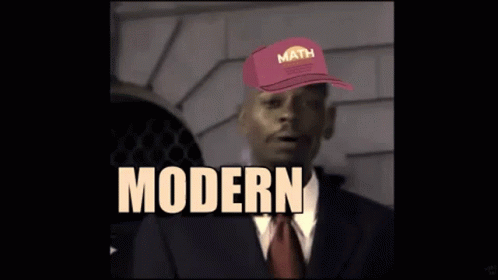
Does that mean micro-schools will replace their traditional counterparts? Unlikely.
However, Vriti sees them as being useful in areas where traditional schools aren’t producing results. She also sees them as a tool to encourage traditional schools to improve their education frameworks.
For example, if a micro-school is competing for a public school’s students and resources, the school must adapt or they risk having a lower budget (funding is based on student numbers in the US).
You can almost think of micro-schools as research facilities. 👩🔬
They’re free to come up with innovative education models and then test their outcomes without having to go through bureaucratic processes. Then as they adopt fruitful models, traditional institutions will be forced to rethink their processes.
And the technology enabling that can enable this innovation on a wider scale is blockchain.

SOCIALS
Tweet of the Week
How Ed3 DAO is Infiltrating Traditional Education
Vriti describes Ed3 DAO as the first DAO for educators, by educators.
The DAOs goal is to empower educators to become the catalysts for change. They understand that education always lags behind innovation, so they’re helping teachers get ahead of the curve through web3 education. 🧠
Ed3 DAO offers verified micro-credential courses, such as those you’d find on Coursera—except they come with on-chain verification, of course.
On top of this, they host an annual web3 unconference which is a metaverse experience that incorporates traditional and unbundled learning into one event. And like most DAOs, they have an active Discord community that’s also free to join (although they do have paid options with extra perks).
Here’s how Ed3 DAO plans to shape the future of education 👇
- Phase 1: Educate 1 million educators about web3 through their free and paid resources, such as their newsletter, Discord chats, mastermind groups, and micro-credentials.
- Phase 2: Flipping the way education innovation happens from top down to bottom up. Currently, innovations and tools come from business and tech people. However, many of these solutions don’t fit as they were intended. Ed3 believes that to achieve useful innovation, educators themselves must be innovators. So phase 2 involves an incubator program to help educators find major pain points in education and use web3 ethos, tech, and funding to solve those pain points through micro-schools and EdTech products or services.
- Phase 3: Continuously researching and experimenting around scaling Ed3 DAO and helping web3 permeate traditional education.
On that note, we’ve got a special announcement about Ed3 DAOs upcoming unconference!

Ed3CON ‘22 will be happening between November 11-13 and is a forward-thinking education event bringing together industry leaders to discuss how web3 can revolutionize education.
It’s one of the world’s first events focusing entirely on education and web3, and will showcase the concepts that Ed3 DAO believes in—in particular, unbundled learning and metaverse environments.
The unconference will take place in a metaverse with days one and three incorporating more traditional experiences, such as a learning lab, ed talk, or networking event. But on day 2 participants get to choose their own learning path or even host their own workshops! 🙋♂️
One of the cool things about the conference is that it’s a convening of all the minds that are working on web3 and education from some angle. It’s a small community, but all leaders and innovators in the field are attending.
So it’s a unique opportunity to learn from and network with industry leaders! 🤯
And to share the love with our web3 fam, Ed3 DAO has given us a limited number of free tickets to attend this year’s unconference.
👉 All you have to do is head to Ed3 DAO, click register now on their home page, and use the code W3A100 during checkout!
🤝 Together with Unlock Protocol: Making Web3 Memberships Easy

Are you ready for Unlock Protocol’s free Membership 101 webinar on November 10th?
Here’s what you could miss 👇
- The membership journey and why memberships are a powerful business tool
- Key membership use cases, including ticketing, media, software & subscriptions, NFT-based certifications, collectibles, and more
- How to set up NFT-based memberships with Unlock Protocol
👉 SAVE MY SPOT 👈
The Question is Who’ll Lead Us Down This New Education Path?
Vriti believes that it’s difficult for traditional industries to reinvent themselves—especially if they have legacy systems that are actually spreading good into the world.
For example, in public schools (even though the pedagogy isn’t great) they’re still providing food and shelter for thousands of kids around the US and millions around the world. So we can’t just say “ok your school model sucks, change it now.”
Vriti describes the current state of education as two parallel trains—one housing the group of innovators who are trying to create new education models, EdTech products, DAOs, etc. While the other train houses traditional educators.
While she believes these groups may never touch (at least not for the next 100 years), they are still communicating and sharing best practices with each other.
So even if the two groups never meet, traditional educators will elevate their methods based on proven innovations because they do care about providing better education.

FOR THE DOERS
Take Action & Level Up
READ
Check out Kyle’s series finale on NFT business models: NFT Tokenized Communities Part 3: The Ultimate How-to Guide for Creators.
WATCH
Now that you know why web3 will change how we learn, discover 4 Ways DAOs Will Revolutionize the Way We Work.
JOIN
Head over to the Web3 Explorers Club to join November’s community-cultivated mastermind!

LEVEL UP WITH WEB3 ACADEMY
Subscribe: Apple Podcast | Spotify | Youtube
Follow: Twitter | TikTok | Instagram | Facebook

POP QUIZ ANSWER
The correct answer is B. 100,000 ✅




